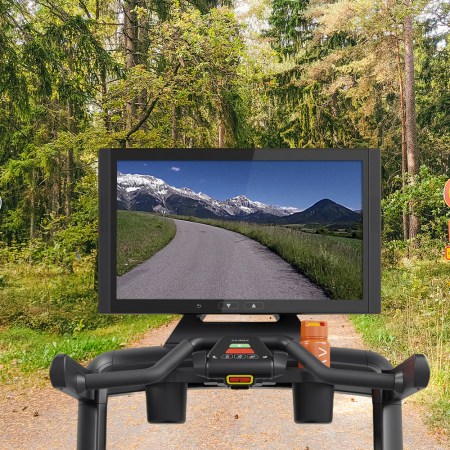If we had to guess, your fitness regimen has probably gotten a bit stale.
So we’d liked to table those beach-bod burpees and propose an alternative for getting you up and moving: it’s called adventure shape.
Adventure shape means being prepared to fight your way through sands and swells, fend off rabid dogs or heat waves, and live to tell the tale.
To learn how it’s achieved, we spoke to five athletes who’ve conquered some of the world’s great outdoor challenges, from summiting the Himalayas to walking across the entire continent of Africa.
Below, we’ve got their tips on how they physically prepared for Mother Nature’s worst, along with a few near-death survival stories to prove it.
Elsye Walker: hiker, Writer at wanderingchardonnay.com
The Adventure: Conquered the “Triple Crown” of North American hiking over three years by walking the Pacific Crest Trail (2,600 miles following Sierra Nevada and Cascade Range), the Appalachian Trail (2,200 miles stretching from Georgia to Maine) and the Continental Divide Trail (3,100 miles, along the Rockies from Mexico to Canada)
The Training: “The best training for a long hike is hiking. I was 200 pounds prior to starting my first hike (PCT) so I started off just walking my neighborhood, dropping 40 pounds in eight months before I hit the trail. Then I started hiking local trails on weekends. Five miles, 10, 20 … it helps to start with a daypack and work your way up to carrying a full backpack. Also, 3-4 days a week I’d work out at the gym with a mix of treadmill (steadily increasing the incline), elliptical, stairs and weights. It’s also important to train in conditions similar to where you’re headed. I live in the desert in SoCal … so I was not ready for the heat and humidity of the AT.”
Her Oh Sh*t Moment: “After I fractured my ankle on the PCT I had to hike (limp) 33 miles to the nearest road. It took 3 days. On day three I saw the road from the top of a pass and I decided to head straight for it. Yes, in a moment of craziness I went off-trail, believing cross country might be faster. (Note: never go off trail when injured and no one knows where you are!) There was a lot of bushwhacking, a stream to ford and a rocky cliff climb to get to the road. I believe being physically (and mentally) prepared kept that ordeal from turning out too badly.”
Final Word: “The Appalachian Trail was the most physically grueling. The AT is a full-body hike. Not only are you hiking straight uphill (no switchbacks) but there is also an awful lot of boulder scrambling and climbing. All those rocks and downhills really took a toll on my knees. There are many times you have to pull yourself up a rock face with hand-holds or a ladder.”
Kieran James Cunningham: mountaineer, Editor at takeoutdoors.com
The Adventure: Journeyed to the Himalayas to summit as many 6,000-meter peaks as possible; climbed Stok Kangri and Kang Yatze in India and Lobuche and Pisang Peak in Nepal
The Training: “I live in the Italian Alps, so at least a few times a week I’m up high and doing a lot of ascent, about 4-5,000 meters per week. In preparation for the trip, I slept in my garden at night to try to get myself used to sleeping in colder temps. I also went home to visit my parents in Scotland before heading to India and Nepal — there are no mountains where they live but a hill that measures a meager 300 meters. I’d go up and down the thing with a 55-lbs backpack until I’d done 1,200-meters of ascent. My legs didn’t thank me for it at the time, but they did when I was on my first 6,000-er (Stok Kangri) in Ladakh.”
His Oh Sh*t Moment(s): “I tried to stay fit while on the road between Delhi and Ladakh and woke up every morning at 4 a.m. to jog through the streets for two hours … which I wouldn’t recommend to anyone. I was chased by rabid dogs, nearly ended up beneath at least a dozen trucks and stepped in a ‘puddle’ that was actually a pothole about nine feet deep! On a brighter note, the pollution levels might have gone some way to prepping my lungs for the lack of oxygen at altitude! I also very nearly died after suffering acute evasive amoebic dysentery as a result of drinking water I hadn’t treated thoroughly enough. I had to crawl for almost a week to get to safety.”
Final Word: “Mental preparation is the hardest part. I knew I was a good climber at 4,000m, but would my body be able to do the same at 6,000m? Would I have the same clarity of thinking at that altitude that I have while negotiating tricky, glacial or mixed terrain back in Europe? There’s all that, along with the threat of pulmonary or cerebral edema, which is ever-present at that height, no matter how well you’ve dealt with altitude in the past.”
Mario Rigby: explorer, Founder of Project Electric Vehicle Africa
The Adventure: Walked and kayaked 7,500 miles across Africa, from Cape Town, South Africa to Cairo, Egypt; took two years in total, documented the journey on Cross Africa
The Training: “I’ve been active in sports since I was 14 years old, with a natural tendency to excel at athletics such as track and field, soccer, rugby and basketball. This eventually lead me to compete internationally for my country, the Turks and Caicos Islands. After retiring from athletics, I began a bootcamp business, got certified in CrossFit and ran a studio gym in Toronto. All that being said, I was in a good place physically for the journey. But I needed to overcome mental blocks such as distance, perception of time and how to pace myself during walks that sometimes can stretch 18 hours long. My background in the 400-meter sprint is what taught me how to overcome pain, and that helped for those journeys. I also had a coach who trained me as I walked 341 miles from Toronto to Montreal before leaving for Africa. That trip took me 14 days to complete.”
His Oh Sh*t Moment: “The most physically grueling part of my journey was probably crossing the White Desert in northern Sudan. It was unbelievably dry; opening your mouth triggered immediate dehydration and dried you out quicker.”
Final Word: “Next up is Project EVA (Electric Vehicle Africa). I will attempt to circumnavigate the entire continent of Africa with a pure 100% electric vehicle, becoming the first person to do so. I will begin training in Ontario and Europe, and then finally start and finish in Morocco.” [Editor’s Note: Project EVA went live on GoFundMe last week and you can donate here.]
Miranda Wingfield: collegiate swimmer, working towards DPT degree
The Adventure: Swam across the English Channel in just over 11 hours; the Channel is 21 miles of open water stretching from Dover, England to Cap Gris-Nez, France
The Training: “I started truly training for my crossing about one year prior to the swim. I swam six or seven times a week, building from one hour of pool swimming per day to 4-6 hours in open water. Weight training at least once a week was also important, and I completed a triathlon about a month and a half before the swim, so there was a good amount of running and biking during this time as well.
Her Oh Sh*t Moment: “Learning to control my negative thoughts during the swim was tough. I never knew where I was for much of the swim and couldn’t see anything but water around me in all directions. Finding it within myself to keep going and not ask my boat crew a million questions was difficult. Not to mention the cold temperature; it’s hard to ignore how cold you are when you have five hours left of swimming.”
Final Word: “I was thinking that the swim would take me about 14 hours and was prepared to swim for at least that long … after actually completing the swim I felt a bit over-prepared; I could have continued to swim if I hadn’t reached France yet, as I didn’t yet feel physically tired.”
Paul Ronto: biker, hiker, runner, Digital Research & Content Director at RunRepeat
The Adventure: Completed an 1,800-mile bike ride from Canada to Mexico along the West Coast; biked 70 miles a day through the Olympic Peninsula then down through California
The Training: “No training prepares you for 70-100 miles a day for 20-30 days straight … the constant wear and tear that happens is hard to plan for. The best way is take a week off of work and ride your bike for 10 hours a day every day; use your first week of the trip to get into ‘trip’ shape … it’ll hurt but by week two you’ll be in a groove. Any endurance workout [Editor’s note: Paul has also rowed the Grand Canyon, run six marathons and climbed Pico de Orizaba in just two days], though, requires full-body training. Here’s a workout I call 4/20s: pick four core exercises (e.g., sit-ups, push-ups, burpees and dips). Find yourself a track. Set your watch for 20 minutes and you run a lap as fast as you can; once you’re back drop and do 20 sit-ups, pop up and sprint another lap, then do 20 push-ups, pop up, sprint, 20 burpees … you get it. Keep repeating the cycle until you finish 20 minutes. It doesn’t matter how many sets you get through, but I aim for four of each.”
His Oh Sh*t Moment: “I’d say the hardest day was in central California; you have to leave the coast near San Luis Obispo and go inland around Vandenberg Air Force Base. There’s a huge hill there we had to climb, and you lose out on the breeze and oceanfront climate. The weather that day went from 85 on the coast to 122 degrees as we neared the top of the hill. I have a picture of an RV that exploded and caught fire because it was just so hot.”
Final Word: “My diet consisted of burgers and Dairy Queen. I ate everything I could find. There are these burger stands in Washington and Oregon all over the place and I stopped at every one of them I think. I literally just needed calories; even with eating a ton of fat and sugar, I lost 22 lbs. in that one month. No food was off limits.”
Lead image courtesy of Mario Rigby, all other images from Wikimedia Commons
The Charge will help you move better, think clearer and stay in the game longer. Subscribe to our wellness newsletter today.
























